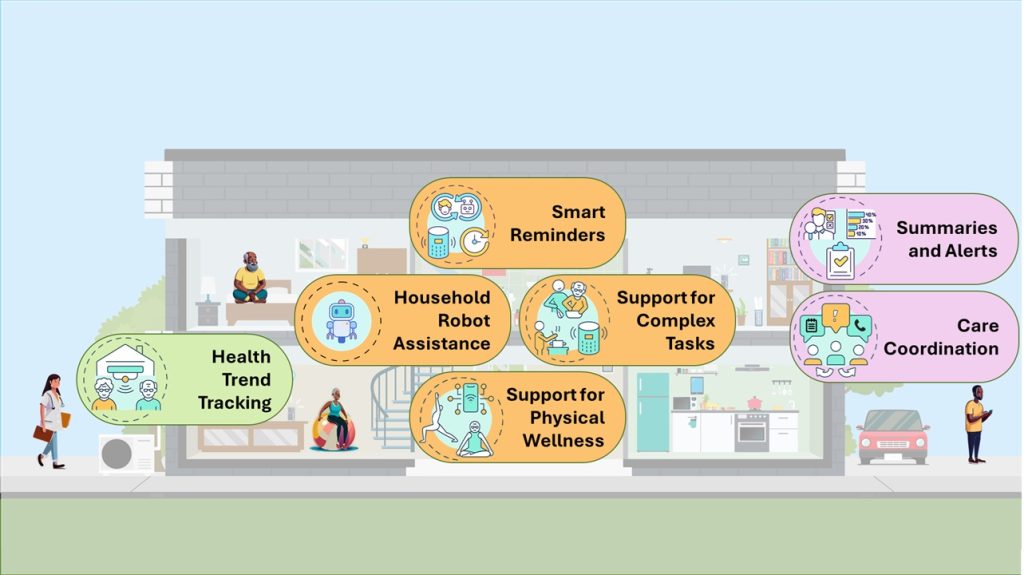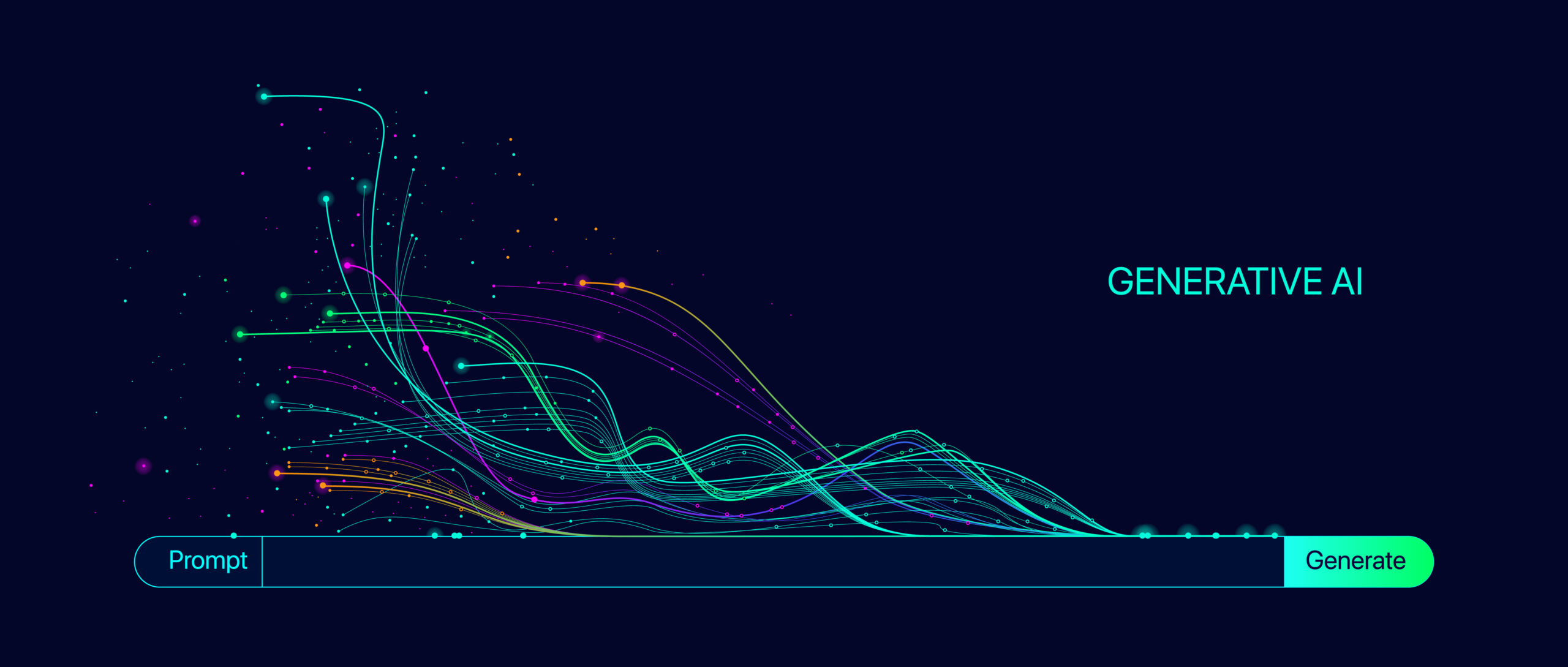
AI-generated summary
This article explores the emerging field of Embodied Artificial Intelligence (AI) and its growing role in smart home environments, particularly to support aging populations. Sonia Chernova, an expert in robotics and AI, highlights how intelligent homes equipped with sensors and AI can monitor daily activities, provide assistance, and communicate with users and caregivers to enhance seniors’ independence and quality of life. Unlike traditional humanoid robots, these systems integrate seamlessly into living spaces, functioning as comprehensive assistive environments that respect privacy while offering personalized support. Chernova stresses that every user is unique, making personalization and adaptability essential challenges. Real-world examples show how involving users early in the design process helps create AI that understands diverse needs and preferences, avoiding intrusive or unwanted interventions.
The article also discusses the transformative impact of large language models (LLMs) on Embodied AI, enabling smarter, more flexible behavior recognition without extensive retraining. However, concerns remain about the reliability and explainability of AI decisions, especially in sensitive areas like healthcare. Privacy is another critical issue, as smart homes must balance data collection with protecting user confidentiality. Looking forward, the future of Embodied AI in homes will emphasize accessibility, intuitive interfaces, interoperability among devices, and transparent data management. Ultimately, the goal is to create environments that truly understand and support individuals, moving beyond humanoid robots toward intelligent spaces that empower users in their daily lives.
Embodied AI is transforming home life through assistant robots and advanced automation. Discover how Embodied AI is redefining human-technology interaction through the insights of Sonia Chernova.
This article has been translated using artificial intelligence
Artificial Intelligence (AI) is no longer confined to software—it’s entering the physical world. At the Future Trends Forum of Fundación Innovación Bankinter, a panel of 40 international experts explored the rise of Embodied AI and its societal impact.
Within this context, Sonia Chernova, Associate Professor at Georgia Tech and Director of the Robot Autonomy and Interactive Learning (RAIL) lab, shared how technology is reshaping elder care, smart homes, and human-machine interaction.
In her talk, Chernova presented an innovative perspective: robots don’t need to look like humans to be helpful—and in some cases, they don’t even need to look like robots.
You can watch Sonia Chernova’s presentation here:
Sonia Chernova: “Accounting for users in Embodied AI development” #EmbodiedAIForum
The Home as a Comprehensive Assistive Robot
Over the past three years, Sonia Chernova has led an interdisciplinary team developing smart home technologies designed to support aging populations. Her research—carried out in collaboration with universities and hospitals—shows that intelligent environments can significantly enhance the independence and quality of life of older adults.
These homes are equipped with sensors that track everyday activities such as opening a door, turning on the TV, or moving through different rooms. Beyond gathering data, the AI takes action: it can talk to the user, send alerts, or display information on a screen or mobile app. “It’s like living inside a robot,” says Chernova, emphasizing that this is a form of Embodied AI, even if it doesn’t resemble a humanoid figure.
The main goal is to enable seniors to live autonomously for as long as possible, offering assistance with daily tasks without intruding on their privacy. These systems operate in coordination with caregivers, family members, and healthcare professionals, equipping them with tools to monitor their loved ones’ safety—remotely and in real time.

Source: Sonia Chernova’s presentation
The Challenge of Personalization: Every User, a Unique World
One of the biggest challenges in deploying AI in smart homes is that every household—and every individual—has different needs. “There’s no one-size-fits-all solution,” warns Chernova. A system that works well for one person may be entirely unsuitable for another, and personal preferences play a key role in how the technology must adapt.
For instance, studies on what older adults expect from robots have yielded surprising results. Simple questions like “Would you like the robot to put away your groceries?” can trigger extreme reactions: some see it as essential help, while others reject it outright, fearing a loss of control over their belongings.
Another compelling example is Henry Evans, a quadriplegic who collaborates with the robotics community to co-design assistive solutions. When he tested an experimental robot, engineers assumed he would use it for practical tasks like drinking water or brushing his hair. Instead, his first action was to pick a flower and hand it to his wife. This gesture—completely unforeseen by the developers—highlights how personalization and adaptability are critical in the design of assistive technologies.
How Can We Build Technology That Understands Human Needs?
Since anticipating user needs is nearly impossible, Chernova advocates for involving robot users in the design process from day one. At her lab, the team has developed proactive robots that interrupt users to offer assistance—but they’ve found that both the timing and manner of the interruption are crucial to user acceptance.
One study showed that when robots directly asked if they could help, user responses varied widely depending on their personality and context. If the robot was too persistent, it triggered rejection. If it didn’t intervene at all, it was seen as useless. Striking the right balance is a challenge, and the only way to get it right is by testing and learning from users from the earliest stages of development.
The Role of Language Models in Embodied AI
One of the most recent breakthroughs transforming Embodied AI is the use of large language models (LLMs) to enhance systems’ ability to understand and respond to human needs. Sonia Chernova emphasizes that language functions as a form of semantic abstraction—it helps us interpret and process the world more efficiently. Applied to home-based AI, this means systems no longer need to rely on manually programmed rules, but can instead learn and adapt more flexibly.
A clear example is human activity recognition in smart homes. Traditionally, each new environment required massive data collection to train a specific system. Now, by combining LLMs with sensor data, it’s possible to generalize behavior patterns without intensive retraining. This has significantly advanced personalized assistance for older adults, allowing AI to better understand individual routines—without compromising privacy.
Despite these advantages, the integration of LLMs into physical AI also presents challenges. Chernova warns of the issue of “unreliable explainability,” where models generate highly persuasive but not always accurate responses. In critical domains like healthcare, this could lead to dangerous decisions. That’s why researchers are working to develop models that are not only more interpretable, but also build trust among users and professionals who rely on them.
The Privacy Dilemma in Smart Homes
Despite technological progress, privacy remains a major barrier. AI systems in smart homes can’t afford to collect invasive data—but at the same time, they need enough information to assist users effectively.
A clear example is monitoring food intake among older adults. For healthcare providers, knowing whether someone has eaten is critical, as skipping meals is a common symptom in conditions like cognitive decline. However, current sensor technology can’t easily distinguish between someone watching TV and someone eating in front of it—making it difficult to automate reminders and alerts accurately.
Striking the right balance between privacy and functionality remains one of the key challenges in developing effective in-home assistive technologies.
Robots in the Home: Assistants, Not Replacements
While the classic image of robotics evokes humanoid androids, Sonia Chernova stresses that the most effective robots in the home don’t need to look human. From virtual assistants to autonomous devices that handle specific tasks, Embodied AI is evolving to blend seamlessly into our environment—without needing a defined physical form.
A clear example of this trend is home automation for people with limited mobility. Instead of a helper robot, the home itself becomes an intelligent environment that automatically responds to residents’ needs.
The Future of AI in the Home: More Accessibility, More Personalization
The development of in-home Embodied AI is accelerating, and research by Chernova and her team shows that the key to success lies in adaptability and user involvement in the design process. As this technology matures, we’ll see systems that are more deeply integrated into everyday life—offering support in more discreet, accessible, and efficient ways.
One of the greatest challenges for in-home AI is adapting to the rhythms and routines of family life. People interact with technology differently and vary widely in their trust of automated systems. Developers are now focusing on intuitive interfaces and continuous learning systems that adjust to users’ evolving needs—without requiring constant manual reconfiguration.
Another critical aspect is device interoperability. Today’s smart homes combine voice assistants, sensors, cameras, and connected appliances—but many of these systems operate independently. In the future, AI will need to function as a central orchestrator, seamlessly integrating all devices in the home to deliver a unified, efficient experience.
Beyond functional adaptation, personalization will hinge on communication between the AI and the user. Advances in natural language processing will enable systems to better understand context and emotions, tailoring their responses to be more empathetic and helpful in any situation.
Accessibility is another fundamental pillar. People with disabilities or cognitive limitations stand to benefit most from the evolution of in-home AI. Interfaces powered by voice commands, gestures, or even biometric signals will allow seamless interaction—without relying on screens or handheld devices. This will unlock new opportunities for inclusion, especially for older adults and those with reduced mobility.
In terms of security and privacy, AI will need to ensure transparent data management. Users will expect greater control over the data collected and stored, along with settings to define varying levels of privacy. Looking ahead, we can expect the rise of local processing models that reduce reliance on the cloud, lowering the risk of data breaches.
Embodied AI in smart homes holds the promise of a true revolution in elder care and day-to-day autonomy. But its success will depend on how well it adapts to individual users, respects privacy, and includes users themselves in its development. As Sonia Chernova reminds us:
“The future of robotics isn’t about building machines that imitate us—it’s about designing environments that understand us.”

Associate Professor at Georgia Institute of Technology



